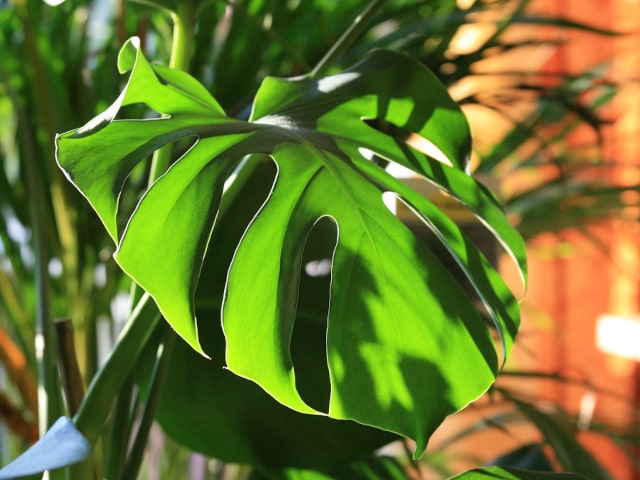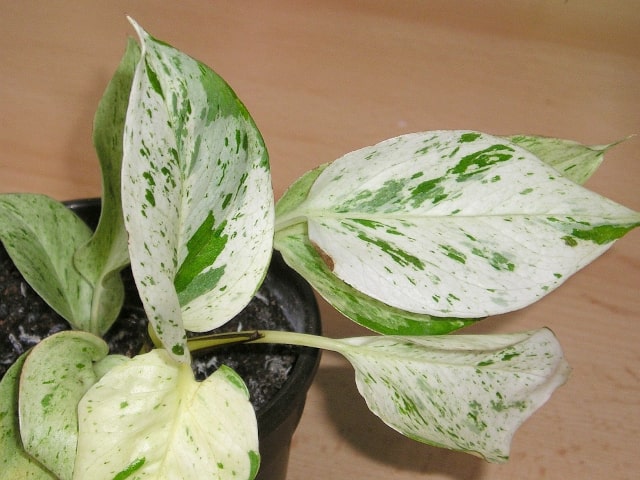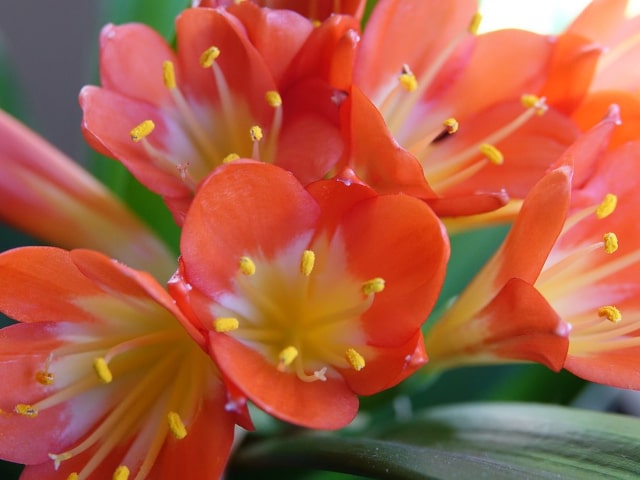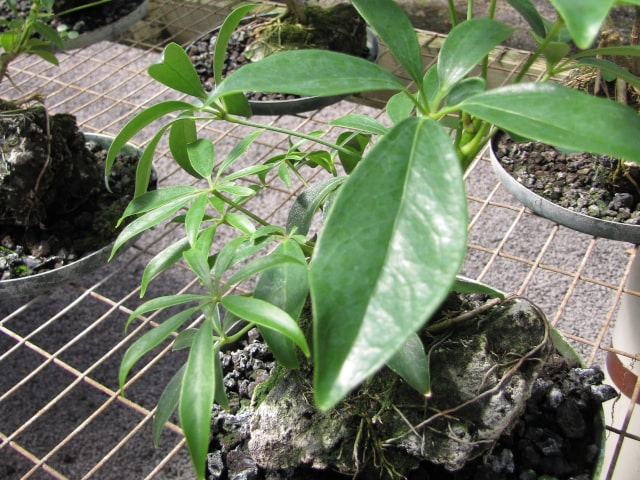
Dorstenia is an unusual plant native to north-east Africa. These plants are known for their attractive foliage, and they grow in a peculiar way, by spreading along the base just above the soil, with numerous branches pointing upward.
The leaves of this plant are generally very beautiful: non-succulent leaves come in many different shapes, depending on the species. Some of the Dorstenia species have flowers that resemble sunflowers, while other species do not have such attractive blooms.
These species often come in many different shapes. Smaller ones can easily be grown in pots with other plants, and they often appear there on their own, if the seeds from one Dorstenia plant accidentally fall in a nearby container. This is particularly true for Dorstenia foetida, which is also the most common of all species that you can find on the market.
However, this doesn't mean that Dorstenia plants are generally easy to grow. On the contrary: many other species are relatively rare and difficult to care for. For example, beautiful Dorstenia gigas, which comes from the island of Socotra in the Arabian sea, can easily wilt if it is exposed to temperatures that are too low or too high. So, keep in mind that Dorstenia plants might not be the easiest ones to care for. However, with a bit of an effort, you will be able to enjoy these gorgeous plants in your home.
Care Requirements to Grow Dorstenia
While some specific care needs will depend on the precise species of Dorstenia, here are some general requirements you need to provide to all Dorstenia plants:
These plants prefer soil that is well-draining. You should never leave them to grow in soil that is soggy, because they can easily become waterlogged, which is very dangerous.
Dorstenia plants can do with various light requirements, from bright light to partial or even full shade. However, the extremes should bot be provided to your plant for long periods of time, so keep this in mind.
During the growing season, you should water your Dorstenia generously, but always allow the soil to slightly dry between waterings. This will prevent the plant from sitting in water. However, you should never allow your plant to dry out completely.
In the winter, it is important to cut down on watering significantly. In general, Dorstenia plants require very little water during the winter months.
You should fertilize your Dorstenia once during the growing season. It is best to use a balanced plant fertilizer for this purpose, although make sure to dilute the solution to the half of the strength that is advised on the package. Ideally, you will use fertilizer that is high in phosphorus and potash.
Additional Tips
Here are some additional tips to help you care for Dorstenia plants:
These plants can live in the hardiness zones from 10b to 12b. Take this into account when choosing whether to grow this plant outdoors or not.
When choosing the right spot for your Dorstenia plants, keep in mind that a warm, sunny spot will make them thrive without making them spread too much. It will result in a nice, compact plant. This is important for those who lack space in their home or garden.
You can propagate Dorstenia plants by seed. Keep in mind that many species of this genus are self-pollinated. The seeds are explosively pushed from the mature seed heads and can land a few feet away. This is how you can unexpectedly get a Dorstenia grow in a pot with another plant, even if you did not put it there. Seed propagation should not be difficult to achieve for many species, but keep in mind that you can also propagate Dorstenia plants by using cuttings taken from a mature plant.
Dorstenia plants enjoy a bit more water than your typical succulents. However, the water need is highly depending on season, so keep this in mind. You should cut down the amount of water significantly in the winter. These plants go partially dormant during this time, so you should water only a little.
Keep in mind that Dorstenia plants are prone to fungal diseases. This is particularly an issue during spring, with huge temperature changes between day and night, as well as frequent rains. Inspect your plants regularly to notice any problem developing. Even better, use fungicide from time to time pre-emptively to prevent fungi from developing.
When it comes to pests, Dorstenia plants can be targeted by aphids and cochineals. It is best to use an insecticide at the end of winter to prevent infestation.
Photo credit: Eric Hunt




0 Comments